When Henley Had a Golf Course!
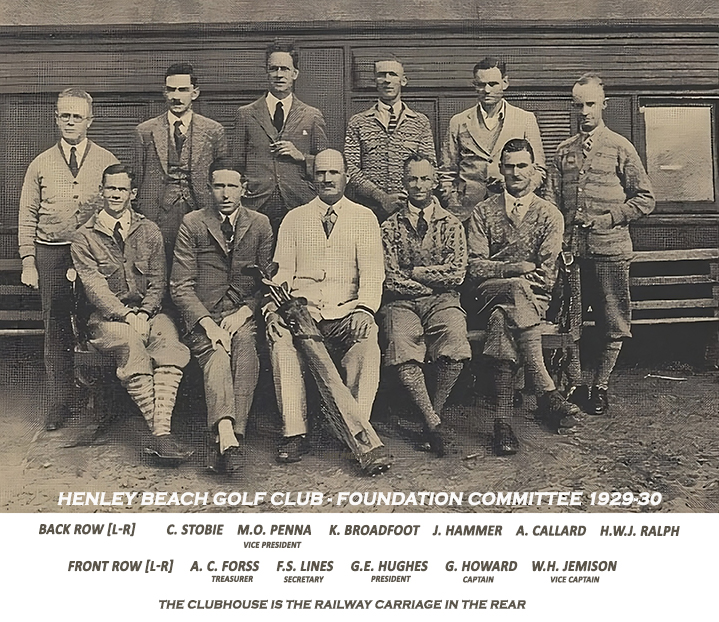
From Sandhills to Fairways
Before 1929, golf at Henley and Grange was more improvised than organised. Local boys, including Ron Jones, fashioned clubs from boxthorn branches and played across the West Beach sandhills, planting flags on dunes to mark their holes. Later they shifted to the ground where Henley High School and Memorial Oval now stand, mowing clearings among the thistles and gathering mushrooms as they played.
By 1929 enthusiasm for a proper club was strong. A public meeting that September created the Henley Beach Golf Club, electing George Hughes as President and Fred Lines as Secretary. Land was leased east of East Terrace, crossing a Torrens distributary that required bridges. A 9-hole course was laid out with advice from rising champion W.S. Rymill. already a familiar name in South Australian golf.
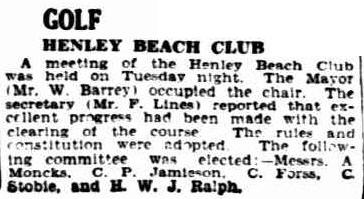
Trove http://nla.gov.au/nla.news-article73775418
To create playable surfaces, the club ordered slag from BHP at Port Pirie to spread on the “scrapes” that served as putting greens. The material itself cost only £2/10/0, but freight charges of more than £23 caused consternation — the first of many financial frustrations the young club would endure.
A Railway Carriage for a Clubhouse
A purpose-built clubhouse was quickly judged too expensive, so the committee purchased a condemned railway carriage in 1930 for under £30 including delivery. The carriage was painted, lit with electricity arranged by Cyril Stobie (of “Stobie pole” fame), and fitted with duckboard paths, cyclone gates, and modest conveniences built at a cost of £10.
The clubhouse is the railway carriage in the background of the photograph above.
By the time of the official opening on 12 April 1930, the Henley Beach Golf Club had truly come to life. The Mayor of Henley and Grange, Mr. E.W. Mitton, drove the first ball before a crowd of 300 spectators. The day’s highlight was an exhibition match between Rymill and club captain G. Howard, with Rymill comfortably winning with a score of 37. The fledgling club had achieved something remarkable in less than a year.
‘The Advertiser‘ newspaper described the opening:
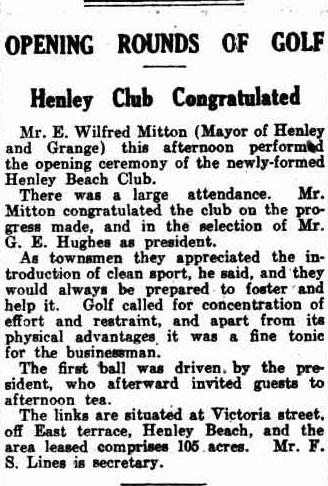 Trove http://nla.gov.au/nla.news-article128989263
Trove http://nla.gov.au/nla.news-article128989263
Cows on the Course
The biggest ongoing cost was rent for the land, and the committee looked for ways to offset it. One solution was subletting the paddocks for grazing. At first, former Mayor D.J. Beck grazed cattle during weekdays, paying a fee per head, while golfers had the ground on weekends. Later, leaseholder Alfred Stanford took over, halving the club’s rental payments in exchange for grazing rights.
 Image source: H&GHS Collection
Image source: H&GHS Collection
This arrangement brought in much-needed revenue but created obvious difficulties. Fairways were often shared with livestock, and golfers had to contend with cows, fences, and droppings as part of play. Despite this, optimism was high. In 1930, the club ambitiously laid out an 18-hole course, extending into new areas of the paddocks. Yet, the decision backfired, as the low-lying ground proved unsuitable and was frequently waterlogged.
The coexistence of grazing animals and golf had its limits.
Fairways Underwater
Flooding soon became the club’s greatest enemy. The distributary of the Torrens regularly burst its banks after spring rains, leaving sections of the course unplayable.
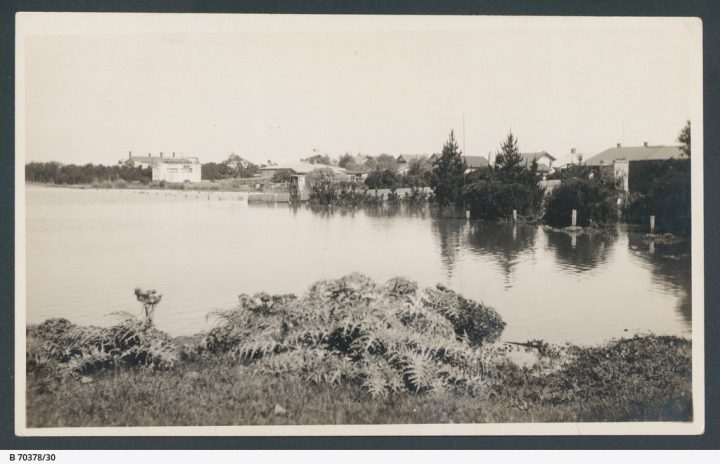
Flooding at Grange c. 1935, Image source: State Library of South Australia B 70378/30
At one point, holes 14, 15, and 16 were abandoned, leaving the club with an awkward 15-hole layout. Eventually, the decision was made to relocate the course further north, onto two pieces of land straddling Grange (formally Kirkcaldy) Road near the junction with Frederick Road.
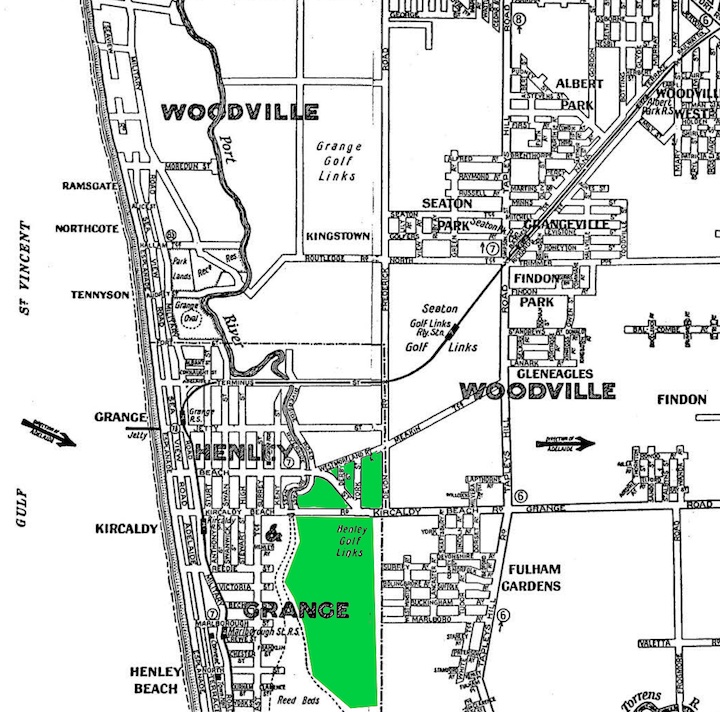
New location of the golf course (Kirkcaldy Rd. is now Grange Rd.)
Image source: H&GHS Collection
The clubhouse carriage was shifted from near Victoria Street to a position on the south side of Grange Road, just east of the T-junction with Frederick Rd. where there was a small red-tiled jarrah cottage that became a meeting place for the women.

Associates Meeting Hall – Image source: H&GHS Collection
Members launched more working bees to clear boxthorn, reeds, and thistles, plant couch grass, and even build a flood bank in 1932 to protect part of the course. Grazing of animals to keep the grass levels down but the incomplete removal of goats, sheep, horses and cows manure deposits from fairways before matches added nuisance value to the players.
Goats posed the most problems!
‘From Mr. R.F. Angel, Attorney for Mrs. C.E. Reid, in reply to the request of this Club to ask that the goats grazing on the property leased by the Club be transferred to the 6th Fairway on weekdays and be not allowed to graze on the property on Saturdays, Sundays and holidays, that this request would be adhered to.‘
Minute of a HBGC Committee meeting on May 26, 1931
Despite these obstacles, the club modernised when it purchased a large petrol mower in 1933. The machine was seen as a triumph, finally replacing the upkeep of the horse that had previously been used to haul cutting equipment. For the volunteers, it was a small but significant victory.
Women on the Links
The Associates — the women’s section of the club — played a vital but often underappreciated role. They organised bridge evenings, dances, and other social events to raise funds, contributing substantially to the club’s survival. Yet their work was sometimes taken for granted. In 1935, sports reporter and committee member Arch Bell raised the issue, pointing out that the Associates’ funds had been absorbed by the main committee, leaving the women without even petty cash. When his motion for prize money support was rejected, he resigned in protest, though later withdrew after a compromise was reached.
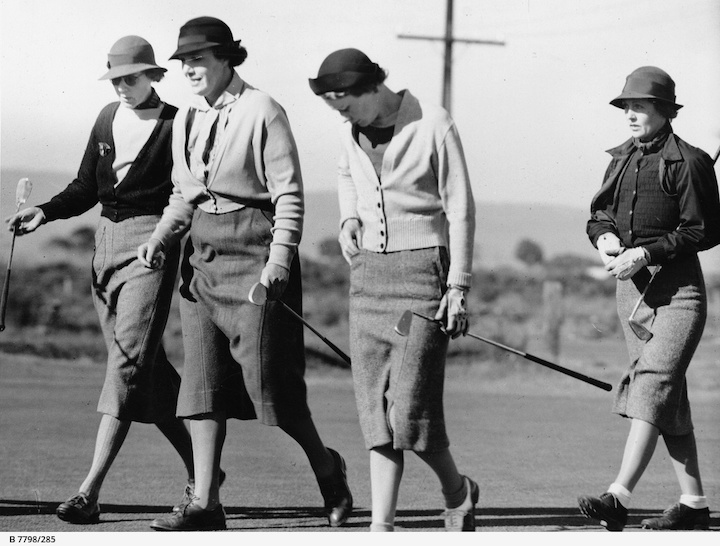 State Library of South Australia B 7798/285
State Library of South Australia B 7798/285
Relations improved, and in 1936 the Associates were recognised with their own championship cup. The women also responded to practical requests — such as refraining from wearing high heels on the course and carefully smoothing footprints in bunkers. Over time, their enthusiasm for the game grew, and women golfers became an increasingly important part of the club’s identity.
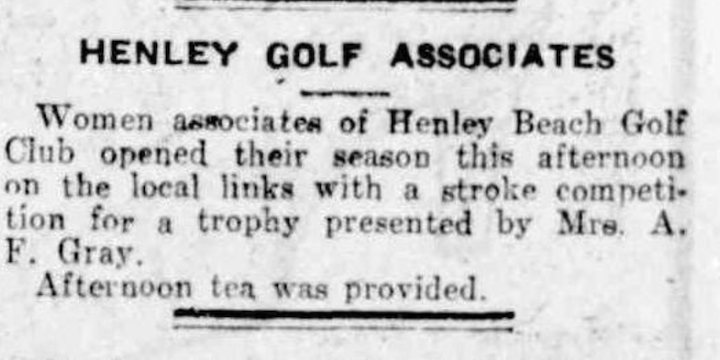 Trove: http://nla.gov.au/nla.news-article129924575
Trove: http://nla.gov.au/nla.news-article129924575
Closure in Wartime
The Depression of the 1930s brought lean years, with many members unable to pay their subscriptions. Yet by the end of the decade the club was recovering, with numbers boosted in part by the growing popularity of women’s golf. Optimism returned, and it seemed Henley Beach Golf Club had secured a future.
World War II changed everything. By 1940 the committee had suspended championships, instead using competitions to raise money for the Fighting Forces Fund. Landlords agreed to reduce rent for the duration of the war, but the difficulties of maintaining the course and keeping members engaged became overwhelming. In February 1942 the club decided to go into recess, paying rent until July but suspending activities. Hopes of re-forming in 1943 were dashed when the land was sold, and the new owner required the club to vacate. Arrangements were made to wind up its affairs.
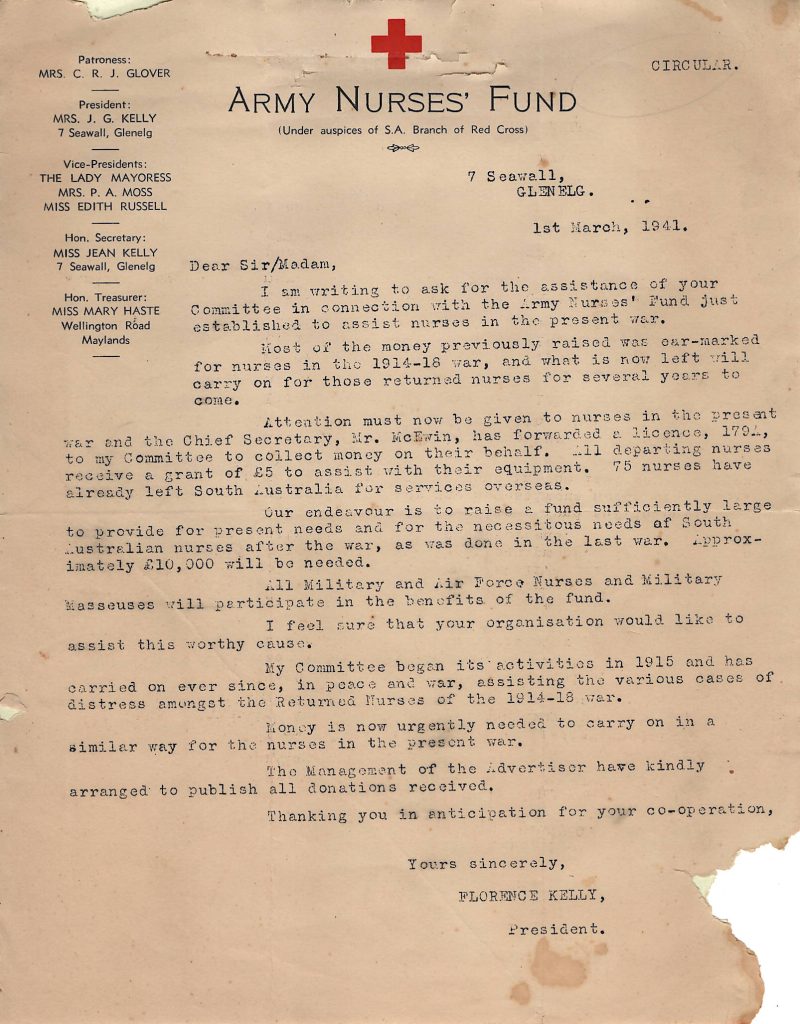
After just 13 years, the the short history of the Henley Beach Golf Club ended. Its short life left behind only memories of improvised sandhill courses, railway carriages, grazing cows, determined working bees, and the community spirit of those who kept it going against the odds, only to vanish under the pressures of floods, finances, and finally war.
Ron Jones Remembers
Ron Jones was a local identity of Henley and Grange and played at the Henley Beach Golf Club in the 1930s.
In this (edited) 1988 audio podcast below he talks with George Willoughby from the H&GHS about those times.
Editor's Notes
The Minute Book and other records of the Henley Beach Golf Club were presented to the Henley & Grange Historical Society in 1994 and were the main source of information for the original article on the Club published in the 1996 H&GHS Journal 17.
This 2025 website story is an abridged version of the text from that article with embedded multimedia from HBGC records and the H&GHS Collection.
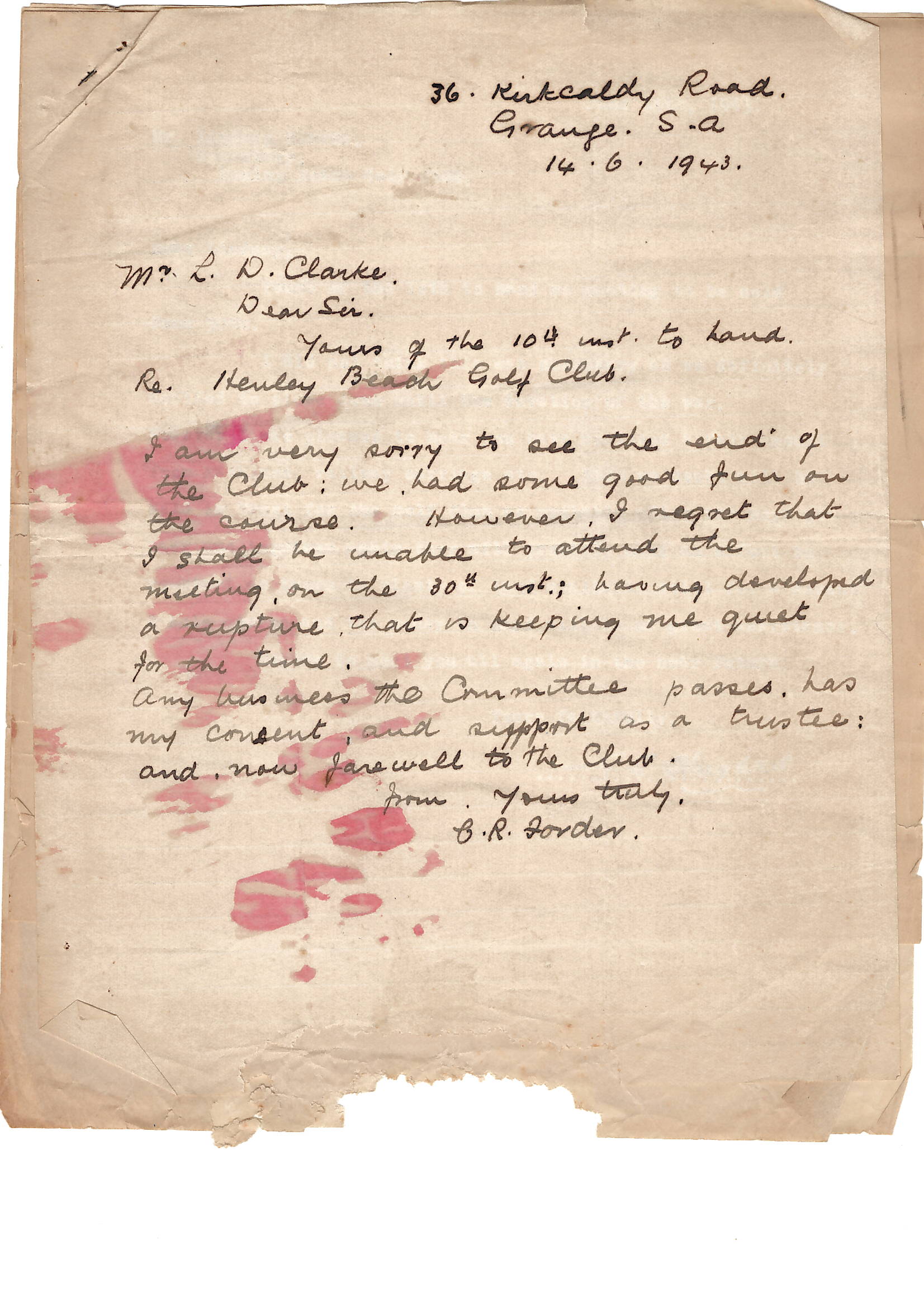
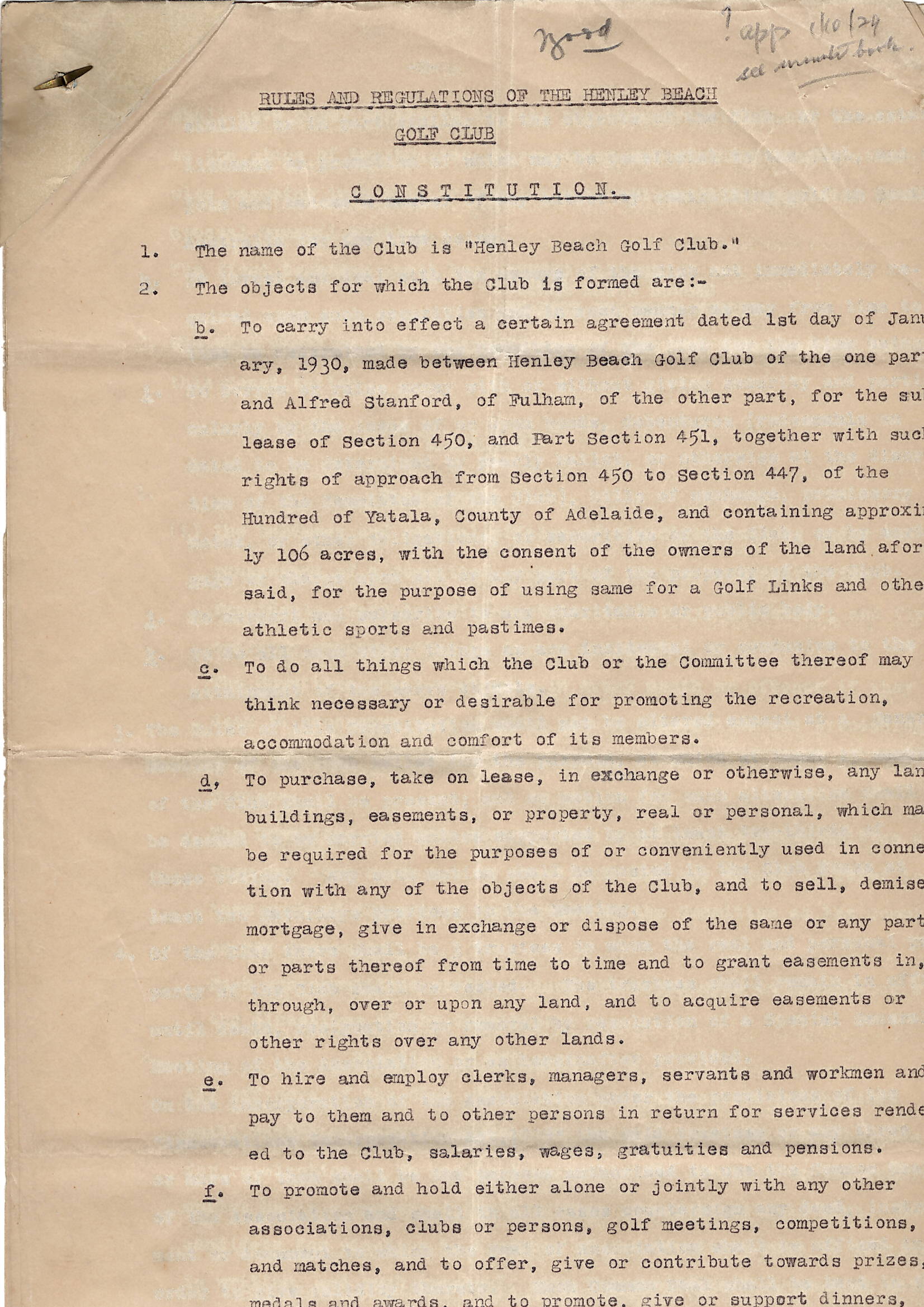

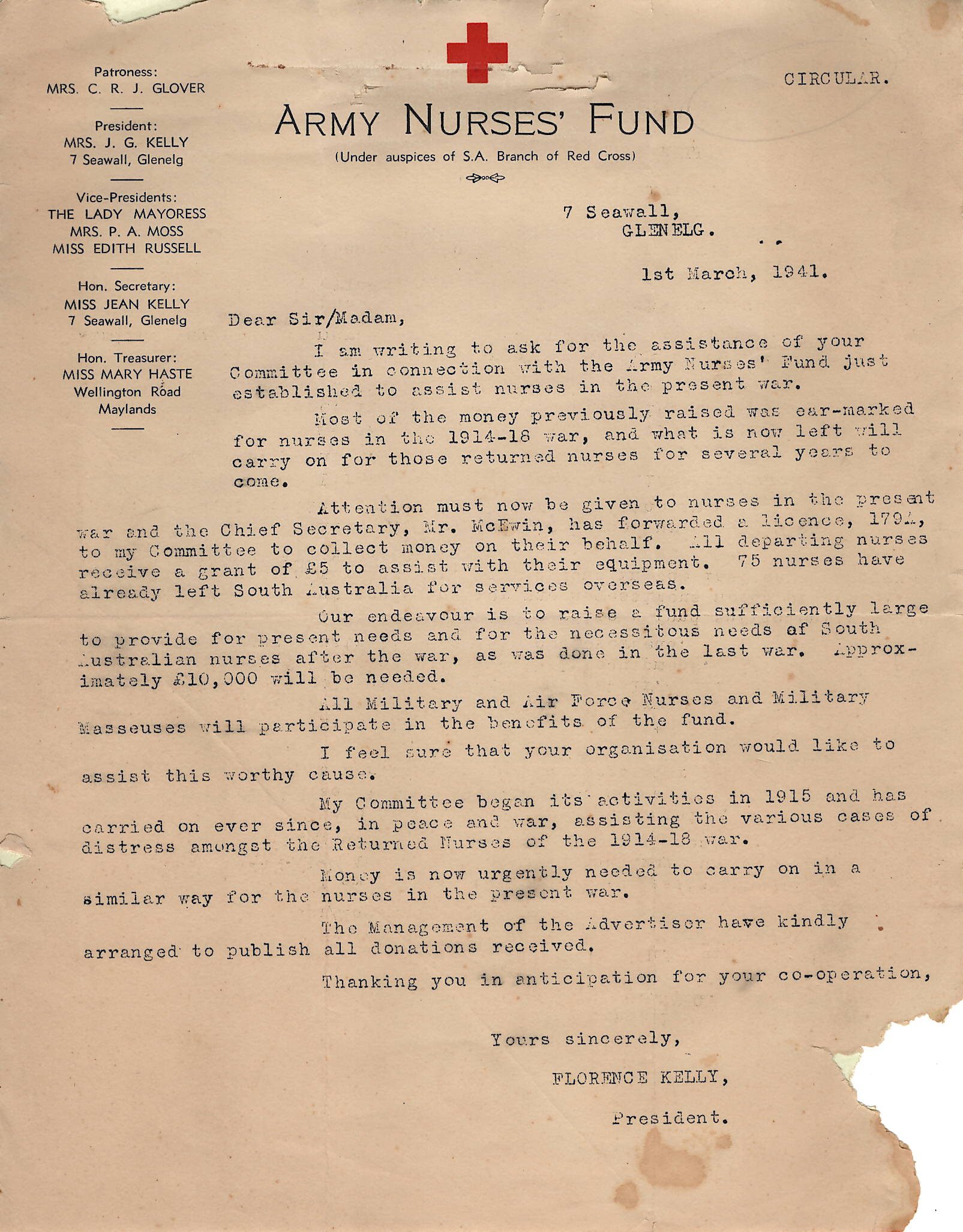

0 Comments